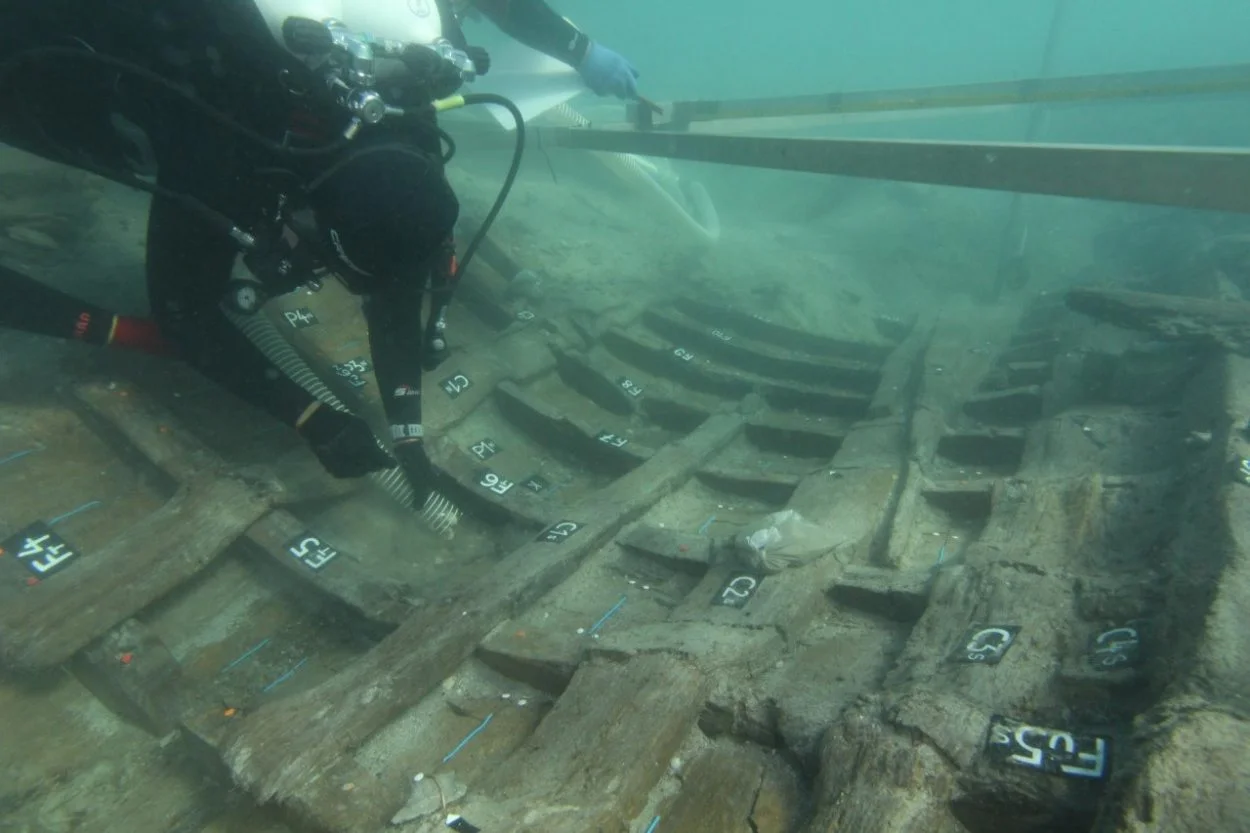A multi-national team of archaeologists have discovered a preserved 2,000-year-old roman ship in the sea off sukošan off the coast of Croatia.
The discovery was made by the International Centre for Underwater Archaeology, which has been working in cooperation with the German Archaeological Institute and a multi-national team.
Underwater archaeologists first identified a possible wreck site back in 2021, after finding pieces of wood and coins that were minted during the reign of Emperor Constantine.

This led to a full-scale underwater survey that has exposed nine metres of the ship’s hull, buried in layers of sand at a depth of two metres in the vicinity of the Roman port of Barbir.
The underwater ruins of Barbir were first discovered in 1973, with ongoing surveys and aerial photographs revealing evidence of submerged structures and two peers, suggesting that the port was a major trading hub during the Roman period.
Preliminary dating has suggested that the ship is around 2,000 years old from sometime during the 1st or 2nd century AD, during the first construction phase at Roman Barbir.
Samples of the hull has been sent to France for further analysis, in the hope that a more definitive date can be determined and to find out whether the construction material was local or came from other regions.
Although parts of the ship have sustained damage due to shipworms, the entirely of the outer frame has been preserved and maintains its shape relatively intact.
For the moment, the wreck will be buried in layers of sand, geotextile and stone to preserve the remains, but the team plans to return in 2023 to expose the remainder of the hull.
Src: heritagedaily.com









